2 | Types of Glassware
Beaker
- A beaker is a stout, cylindrical glass vessel, with a flat bottom and pouring spout.
- Beakers are used for preparing solutions, collecting and mixing liquids and heating solutions.
- They usually have measurement lines, but these should only be used for measuring approximate volumes, as they are not as accurate as other types of glassware.
- Beakers come in a range of sizes, with some being narrower or wider than the standard shape shown below.

A beaker
(Image: Lilly_M, Wikimedia Commons)
Conical Flask
- A conical flask (also called an Erlenmeyer flask) is glass vessel with a wide flat bottom that tapers up into a narrow cylindrical neck.
- Conical flasks are used for collecting and mixing liquids, as they can be swirled without spilling contents.
- They are also used in biology for growing microbial cultures.
- Like beakers, conical flasks usually have measurement lines that should only be used for measuring approximate volumes.
- Conical flasks comes in a range of sizes, and can have necks of varying widths.
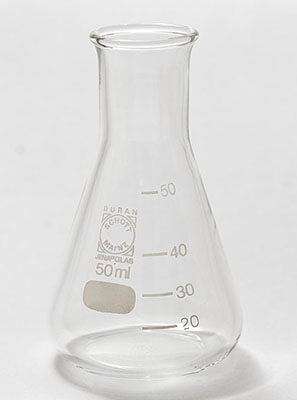
A conical flask
(Image: Lucasbosch, Wikimedia Commons)
Measuring Cylinder
- A measuring cylinder (also called a graduated cylinder) is a tall, narrow glass vessel with a wider flat-bottom stand.
- Measuring cylinders have precisely marked measurement lines along their side.
- They are used for accurately measuring volumes of liquids.
- Measuring cylinders come in a variety of sizes.
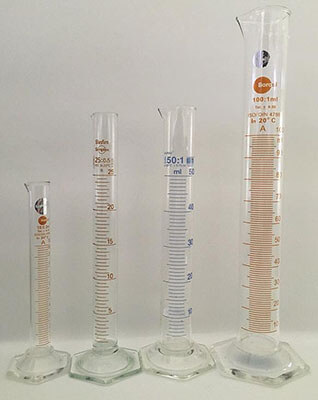
Measuring cylinders
(Image: Praphai Donphaimueang, Wikimedia Commons)
Test Tube
- A test tube is a narrow glass tube with a round bottom and open top.
- Test tubes are used for holding, mixing or heating small samples of substances (liquid or solid).
- A rubber stopper can be used to seal a test tube when mixing substances.
- When not being held, test tubes are placed in a test tube rack to prevent them from toppling over or rolling off the lab bench.
- This reduces the risk of breakage and chemical spills.
- When heating substances in a test tube over a Bunsen burner flame, a test tube holder is used.
- Test tubes can also be placed in racks in a water bath.
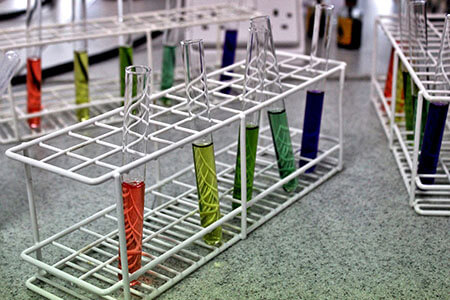
Test tubes
(Image: Milesl, Pixabay)
Glass Funnel
- A glass funnel is a wide-mouth glass vessel tapering to a narrow drainage column.
- Glass funnels are used for preventing spillage when pouring liquids from larger containers into smaller, narrow-necked containers.
- They are also used in conjunction with filter paper for filtration of fine solid particles from liquid mixtures.
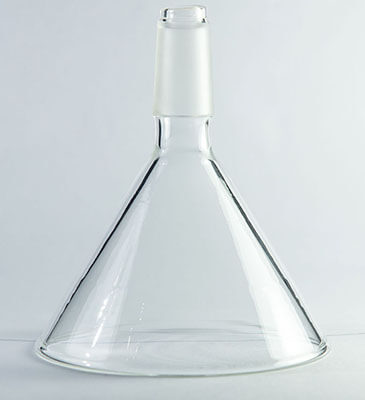
A glass funnel
(Image: Aleksander Sobolewski, Wikimedia Commons)
Round-Bottom Flask
- A round-bottom flask is a glass vessel that is completely round, except for a narrow neck.
- Round-bottom flasks are used for specialised laboratory tasks, such as distillation, where the flask is heated over a Bunsen burner flame.
- Due to its shape, a round-bottom flask is held in a clamp or attached to another piece equipment when being used.
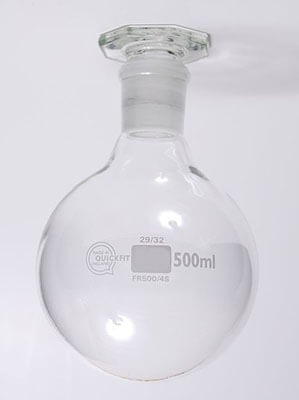
A round-bottom flask
(mage: Lilly_M, Wikimedia Commons)
Glass Rod
- A glass rod (also called an stirring rod) is thin, solid length of rounded glass.
- Glass rods are used for stirring chemicals and decanting liquids.
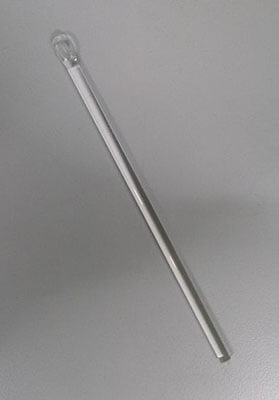
A glass stirring rod
(Image: TarnPraewan, Wikimedia Commons)
Watch Glass
- A watch glass is a round, slightly concave (curved) piece of glass.
- Watch glasses are used for holding small amounts of solids or liquids, often for weighing them.
- They are also used as a surface for evaporating liquids from solutions and drying solids.
- They can also be used as a temporary cover for beakers containing solutions, to prevent dust or other substances from getting into them.
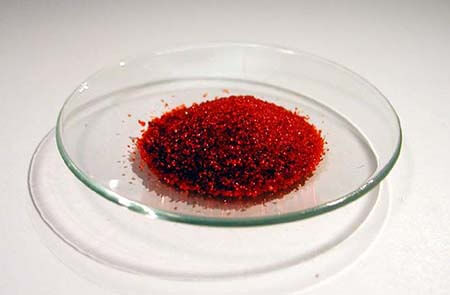
A watch glass
(Image: Ilja, Wikimedia Commons)
Quizzes

